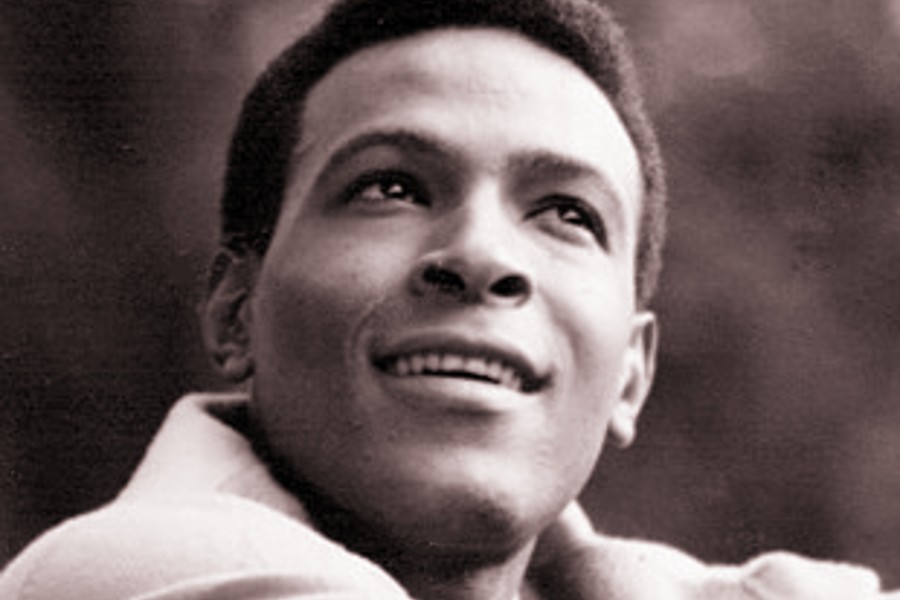 Michael Hogan, 1766-1833, was an Irish-born shipowner, East India captain, slave runner, privateer, convict ship captain, involved in the early settlement of Australia, American land speculator.
Michael Hogan, 1766-1833, was an Irish-born shipowner, East India captain, slave runner, privateer, convict ship captain, involved in the early settlement of Australia, American land speculator.
Hogan was born in Stone Hall, County Clare, Ireland in 1766. Between 1780 and 1784 he served as a seaman and midshipman in the Royal Navy, with an entrepreneurial flair. After leaving the navy he sailed as a seaman on trading voyages to East India and China before becoming owner and captain of a ship trading between India and Europe. May 1789, Hogan, who had an uncanny way of making useful new business connections very quickly, is associated in Bombay with merchant Robert Henshaw and a new 889-ton ship, called Bombay Anna, or, Anna. The same year Hogan married Frances Richardson, the illegitimate daughter of William Richardson, a trader that Hogan engaged in business with out of Bombay, who was aboard Hogan’s ship, the Admiral Cornwallis, on the voyage to Australia, and the same year he married his “dark-skinned…,” “East Indian lady of great wealth,” he called his “Indian Princess”, Anna Marie Lacy, whom he will married on 14 September 1789, aged 15.
Hogan starts to sail about Indian ports with his father in law, Captain William Richardson of Bombay, on Triumph, Captain Alexander Tennant. Tennant, with whom he would later work in South Africa. Hogan entered the rice trade and chartered an American ship Myrtle to carry rice; seemingly his first major commercial contact with Americans. Hogan planned to start with his own new ship, but rice market problems due to drought slowed him down. 1790, Hogan first meets Alexander Tennant in 1790. About then, he dealt with Gillett Lambert and Ross and Co shipbuilders. Forbes Sheppard and Co of Bombay invested in Hogan’s ship, which was launched November 1790-1792, Hogan´s new ship becomes Il Nettuno; one of four ships engaged in trading ventures, probably illicit trade from an East India Co. point of view. And Hogan soon, looking for business, happens to meet Robert Charnock of Ostend, who had connections with a major East India trader in London, David Scott Senior and Co. Scott in London had important political connections with Henry Melville, Lord Dundas, who valued Scott´s advice on affairs in India due to Scott´s earlier notable career in India till 1786 when he returned to England/London. Charnock and Hogan had dealings after November 1790. It was said that offloading cargoes from India at Ostend was highly profitable, and Captain William Richardson may have introduced Hogan to Charnock. On the 30th January 1792, Hogan with his wife Ann and father-in-law is on Netunno to Indian ports for Europe, with Hogan acting as supercargo for Charnock and Co. From Europe, Hogan went to London where his first child William was born. It seems likely Hogan resided in a house in Finsbury Square, London, since Charnock´s wife lived there. Hereby hangs a complicated tale. Charnock´s wife was Elizabeth Parish, a daughter of an extraordinary Scots merchant in Hamburg named John Parish. During the American Revolution, Parish had commercial dealings with none other than the ¨financier of the American Revolution¨, Robert Morris, out of which connection in the early 1790s, Parish enjoyed a position as US Consul in Hamburg. Parish regularly dealt with high-level finances names such as Barings in London, and Hopes and Co. of Amsterdam, and almost anything could have happened. (We do not yet know enough about Charnock´s relations if any with John Parish, but Parish became an agent for Hogan in Hamburg.) January 1793, Hogan was preparing with Charnock to return to India with goods via South Africa by late April in Nettuno. Hogan´s goods sold well in India, so he canvassed India trading houses such as John Forbes and Co., Fairlie Reid and Co., and John Ferguson and Co. about cargo-handling. It was about this time that Hogan´s relations with David Scott and Co. in London firmed, partly as Scott was a promoter of diverse country trading between India and China and did not take a narrow, East India Co. point of view. Hogan had ideas of carrying silk cargoes to Europe, but by now Napoleon Bonaparte was on the rampage in Europe. Opportunities closed up, which is how and why Hogan renamed Netunno as Marquis Cornwallis, after failing to sell her to the Royal Navy as a man of war for about 10,000 pounds Meantime, David Scott and Co, due to Britain´s war with France, were now thinking of privateering between South Africa and India to prey on French shipping, a matter which also came to Hogan´s attention. What is important to note here is that Hogan was not a normal convict ship’s captain, he had far wider horizons. In theory, he had financial and trading connections with some hugely influential trading names, Robert Charnock, John Parish (who had connections in Europe and to the new USA), and David Scott and Co., which was developing an impressive international network.
Under the command of Hogan, Marquis Cornwallis departed Cork, Ireland on 9 August 1795, carrying 163 male and 70 female convicts. She also carried 36 soldiers of the New South Wales Corps, and their families. About a month into the voyage Hogan had to put down a mutiny, with the result that seven convicts and a sergeant, one of the mutineers, died of their injuries, including flogging. Marquis Cornwallis then stayed for almost a month at the Cape, re-provisioning. She arrived at Port Jackson on 11 February 1796. In all, 11 male convicts died during the course of the voyage.
1796, Hogan acquires a 400 acre land grant at Windsor in New South Wales, which he named “Cornwallis”, but evidently thought little of commercial prospects in NSW. What interested him now was the British occupation of South Africa, privateering during the wars with France, the slave trade and linkages between London, Europe, South Africa and India. He then sailed to Bengal for cargo for EICo, leaving Sydney 15 May 1796, with Edward Macarthur, son of John Macarthur of the NSW Corps. Hogan sailed via Norfolk Island and picked up Governor King´s son, Norfolk King. Hogan left Madras on 12 September 1796, and was back in England by 24 July 1797. 1797, Hogan then decided to go to South Africa with the support of David Scott´s firm (which included William Lennox) with an eye to privateering. Hogan dealt also with James Duncan (also a minor convict contractor name) who took a contract re Marquis Cornwallis Captain Charles Munn to carry flour. In October 1797, Ship Harbinger registered when Hogan had an address at Bridge Street, Blackfriars, London. 1798, Hogan began to consider slaves in South Africa, with firms that arose, such as Tennant and Hogan and Trail and Hogan. Tennant had come to Cape Town in 1796, 1799, Ship Joaquim of 1799 (Or, Joachim, a Portuguese ship) carrying slaves owned by Tennant and Trail Ship Harriet sailing as a privateer under Danish colours. Hogan in South Africa (for David Scott of London?) had a NSW agent John Macarthur (a trading officer of the NSW Corps at Sydney). Hogan once used a ship Young William carrying spirits in October 1799 for trade to NSW. Marquis Cornwallis mostly traded under the control of William Richardson. Ship Collector Captain David Smart, operating from March 1799 as a privateer (as mentioned in the Australian Dictionary of Biography entry on Michael Hogan). 1800, Hogan´s privateers took two Spanish ships off the coast of South America. Hogan was associated with a ship Chapman coming into London. Hogan was owed 5360 pounds by William Kenyon of New York for spices shipped on American ship Lapwing in December 1800, and also was owed by Robert Lenox of New York (a considerable merchant) who later dealt with Hogan when Hogan went to New York. Hogan´s man Anderson visited America, maybe re Hogan selling slaves into southern American states, and contacted Robert Lenox. 1801, Ship Fanny carrying rice from Coromandel Coast India to South Africa/Cape Colony. Ship Matilda of 1200 tons carrying rice, the same. Ship Boa Caetana to Brazil. Ship The Chance 117 tons, Captain William White, for Hogan, came into Sydney Harbour (Port Jackson) on 13 April 1801, captured from the French as a prize. Hogan began selling up interests in South Africa (e.g. sugar) to get funds to take to the US a source said.
Hogan in the United States 4 May 1804 (some experts say 1802), Hogan arrived in New York, with his Indian born wife Frances (the illegitimate half-caste daughter of Capt. William Richardson and his Indian housekeeper Anna Maria Lacy) Euro/ India Bride – who he claimed was a “dark Indian princess with a dowry of two million US dollars” – amidst a great fanfare of self-publicity calculated to impress local society and businessmen. However, it would seem that any fortune he claimed he had was probably much less than US $2 million, and would more likely have come from general shipping profits from the Indian and Pacific oceans – and especially the proceeds of the sale of any prize shipping/prize cargo – rather than, as the Americans came to think, his marriage to a supposed well-born Indian princess from Bombay. Perhaps he created her supposed “dowry” as a way of protecting part of his fortune from any bankruptcy proceedings in his business speculations. He bought a vast estate comprising 100 acres of New York City land on the Hudson River, running from 107th Street to 131st Street, west of Bloomingdale Road (now known as Broadway) – the value of such land today is virtually impossible to calculate!
The southern part of Hogan’s property he styled Monte Alta, and the northern portion where he built the Claremont House (above), which ran from 121st to 127th street, west of Bloomingdale Road; the latter name being probably intended to commemorate his native county – Clare – in Ireland became the Clarement Inn. Grant’s mausoleum (Grants Tomb) now stands in Riverside Park, on a portion of the property. However, in typical self-aggrandising manner, Hogan was reported as saying that he had “named Claremont for the Roehampton castle in Surrey of his long-time friend William, Duke of Clarence, the future “Sailor King, William IV of England, with whom he had served as a midshipman in the Royal Navy,” an impressive claim, but most unlikely. The house was decked out royally with imported furniture and the largest plate-glass mirrors yet seen in the city and, according to the New York Post reminiscing about Claremont 100 years later,
“as a summer residence, it was the scene of some of the most brilliant social festivities in the city”.
Michael Hogan and his “Indian Princess” had obviously taken New York society by storm. Hogan opened a dry goods store, at 225 Broadway, later the site of Astor House, which he had for two years. Hogan then went to 52 Greenwich Street, next door to merchant Thomas Satterwaite who had married a daughter of Theophylact Bache. Later Hogan had a counting house at 82 Washington Street, and went into shipping, ship-owning and general commission business. He imported goods from the West Indies, as well as Spanish and other brandies. He also investigated selling slaves into southern American states. 1806, The US government was deeply in debt after buying the vast area of central America west of the Mississippi from Napoleonic France for $15 million dollars in 1803 – the famous “Louisiana Purchase”. To recoup the investment, Congress offered great parcels of land at very cheap prices for rapid sale, and wealthy investors formed syndicates to buy as much as possible. This started a boom and bust real estate bubble, with many bankruptcies, including speculator Alexander Macomb of the Macomb syndicate, who was thrown into a debtors’ prison, about $300, 000 in debt after the “Panic of 1792”. 1807, Hogan began to speculate in land in Central and Northern New York State, by the Canadian border. With Cornelius Ray and William Bayard of New York. Hogan bought some land from the Macomb Estate, 10,168 acres of Franklin County, and dealt in land with John and Robert Oliver of Baltimore re the land area of the Macomb land. He bought 20,000 acres just north of what became the Adirondack Park, including the town of Bombay, which he named in honour of his wife’s birthplace. He also named Hogansburg after himself; today it is a hamlet of the St. Regis Mohawk Reservation, Franklin Country, in the town of Bombay in the state of New York. 1812, Hogan faced financial ruin after the War of 1812 with England, and his Claremont estate was sold to Jacob Post in 1821. The Post family turned over part of the estate to the city in 1872 for the formation of Riverside Park and gradually sold the remaining portions in lots, selling the last lot in 1900. The house was moved and converted into an inn, leased by the city. 1820, Hogan became a US Consul to Valparaiso in Chile. 1833, Hogan died in New York in 1833, and his wife, Frances – the “Indian Princess” – looked after his estate and died there in 1859. Michael Hogan and his “Indian Princess” had four children; one son, William, and three daughters, Frances, Harriet and Sophia, who all seem not to have married. Their son, William Hogan, was elected to the New York State Assembly in 1822. In 1829 he was made a judge of the court of common pleas for Franklin County, and in 1830 he was elected to the US Congress a source said.
The Hogan Group of islands in Bass Strait in between the Australian mainland and Tasmania is named after him.
Hogan’s story is told in a book Captain Hogan: Sailor, Merchant, Diplomat on Six Continents by Michael Hogan Styles.
Photo credit: 1) Michael Hogan, we apologize for the image, if you have a better image please share with us below. 2) Marquis Cornwallis. 3) Early years of the Claremont Inn.
Become a Harlem Insider!
By submitting this form, you are consenting to receive marketing emails from: Harlem World Magazine, 2521 1/2 west 42nd street, Los Angeles, CA, 90008, https://www.harlemworldmagazine.com. You can revoke your consent to receive emails at any time by using the SafeUnsubscribe® link, found at the bottom of every email. Emails are serviced by Constant Contact










